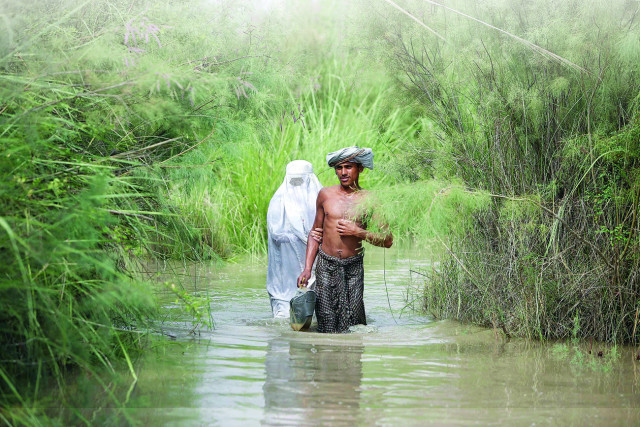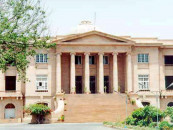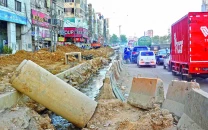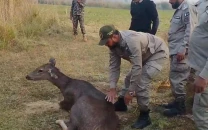Floods are headed towards Sukkur with 962,000 cusecs

While the country had been suffering a drought-like state for many years, it is now facing disastrous consequences of monsoons and floods, said Ashraf while comparing the extreme ends of the two natural disasters.
However, while people living in the kachcha areas were previously not ready to leave their homes, they have now been shifted to safe places, he said, adding that the government must now undertake the responsibility of helping those who are marooned and have lost their houses.
The Pakistan Army has saved thousands of people and the National Disaster Management Authority (NDMA) has also played a vital role in this regard, Ashraf said.
“It is difficult to assess the damage at this stage. That will only be possible after the water recedes,” said Ashraf. He claimed, however, that the losses had been minimised due to the precautionary measures taken by the government, and that the country would have been faced with a bigger disaster otherwise.
The relief and rehabilitation phase is likely to be the most important as well as the most difficult task faced by the government, said Ashraf. It is likely to cost a great deal of money, for which local and foreign donations will be sought as the government does not have enough resources, he said, adding that the funds will be utilised through a completely transparent channel.
Ashraf said that the Kot Addu and Guddu power plants were safe and were producing electricity as they had before the floods.
When questioned about the condition of the Sukkur Barrage, Ashraf said that thought it had been designed to carry 1,500,000 cusecs of water, the barrage’s capacity had been reduced to carry 900,000 cusecs due to some “technical reasons”.
SIUT dispatches teams
PPI reported that the Sindh Institute of Urology and Transplantation (SIUT) has sent a 10-member team of four doctors, technicians and laboratory staff to set up a free medical treatment relief camp at Jamshed Bund near Pir jo Goth in Khairpur in collaboration with the Gambat Institute of Medical Sciences.
Patients from the adjoining flood areas have started attending the clinic. SIUT is setting up a second camp at Sijawal, district Thatta as the flood is expected to affect the Kotri Barrage area. The second team will leave on Monday.
Kashmore and Ghotki
The army, navy and Rangers personnel said the remaining people were reluctant to leave their homes.
Those evacuated from villages settled on the embankments of the river or shifted to their relatives and friends’ homes in nearby cities and towns.
They refused to move to relief camps, where they believe the government was not providing proper facilities.
According to the figures gathered from Kashmore and Ghotki districts, out of 125,000 people living in the kachcha areas, 90 percent have either been evacuated by the army or they have moved out on their own. The remaining ones were not prepared to leave the area.
Published in The Express Tribune, August 7th, 2010.



















COMMENTS
Comments are moderated and generally will be posted if they are on-topic and not abusive.
For more information, please see our Comments FAQ